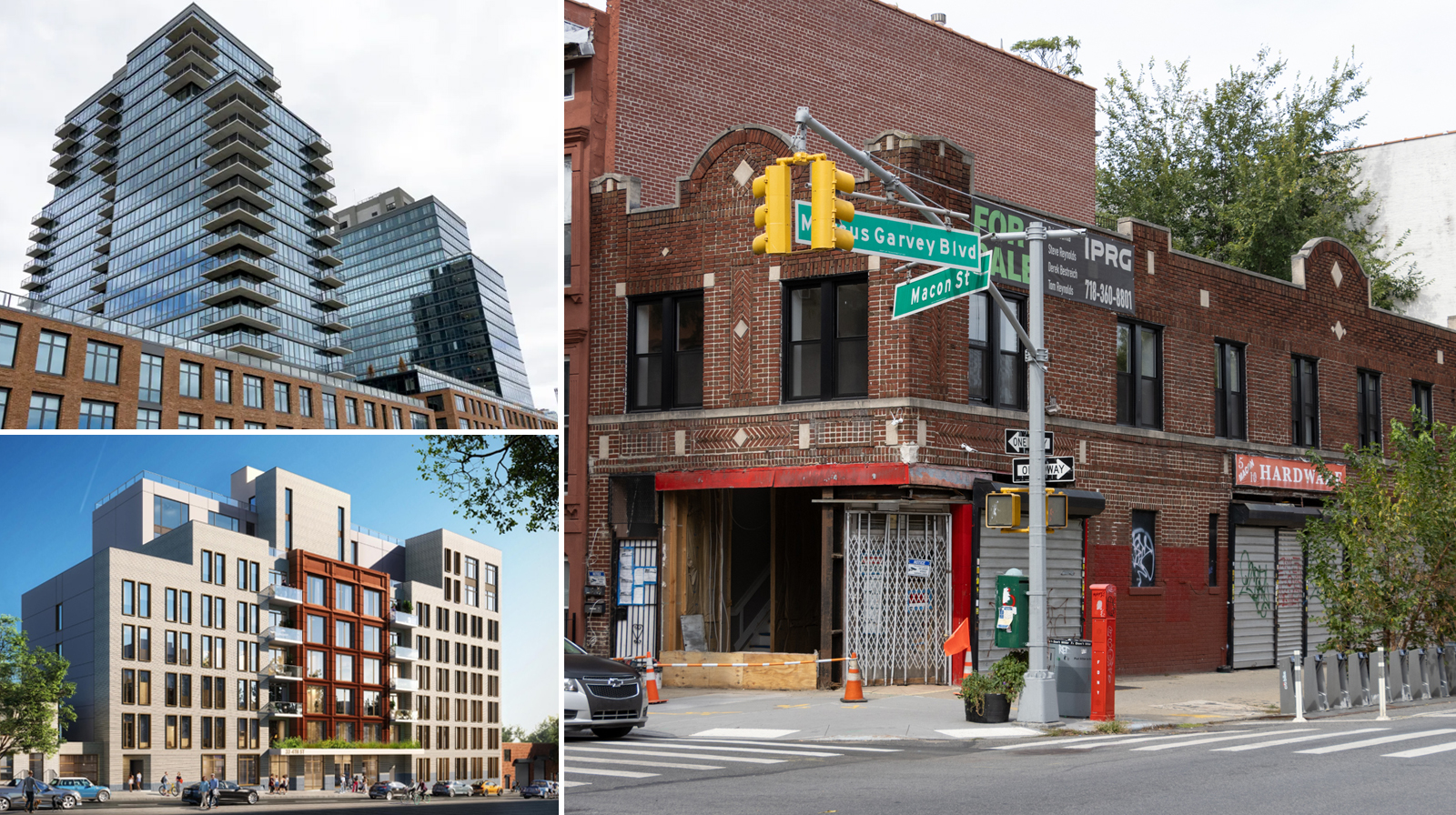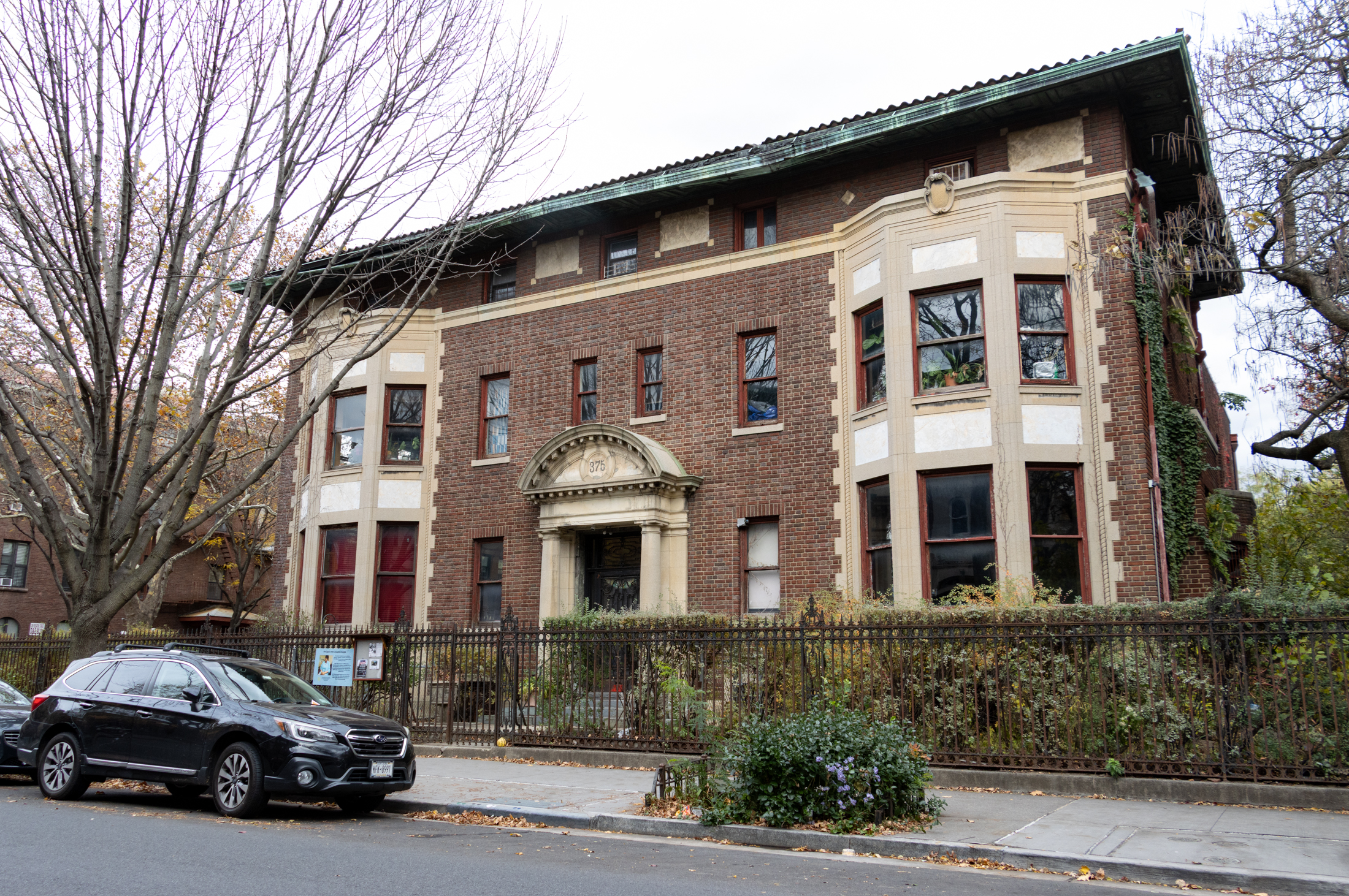Affordable Housing: Promises vs. Reality
The Gotham Gazette published an interesting article this week examining Mayor Bloomberg’s track record in affordable housing. A keystone to the Mayor’s housing plan is inclusionary zoning—granting benefits, such as a 33 percent higher floor to area ratio, to developers who include permanent affordable housing in their plans. Critics say that the plan hasn’t delivered…


The Gotham Gazette published an interesting article this week examining Mayor Bloomberg’s track record in affordable housing. A keystone to the Mayor’s housing plan is inclusionary zoning—granting benefits, such as a 33 percent higher floor to area ratio, to developers who include permanent affordable housing in their plans. Critics say that the plan hasn’t delivered nearly as much affordable housing as promised and supporters say that the plan can work, given enough time. In Greenpoint-Williamsburg, for example, the program has created 768 affordable rentals since 2005, and the goal is 2,200 over the course of a decade. Also, in 2005, the city promised over 6,000 units from already approved projects, but since then only 2,716 have come into existence, mostly in Manhattan, and this figure includes renovations of existing affordable apartments, not just new units. Also, between 2005 and 2008, the city lost 20,000 rent-stabalized apartments to market-rate developments, which tips the mayor’s affordable housing balance into the red. Alternative solutions proposed include mandatory as opposed to optional inclusionary housing, and a new focus on preservation and regulation of existing housing, as opposed to new construction. “The priorities that Bloomberg has put on development of new construction as a solution to affordable housing has been the wrong emphasis,” Mario Mazzoni, the lead organizer at the Metropolitan Council on Housing, told the Gazette. “You cannot build yourself out of the affordable housing crisis in New York City.”
Affordable Housing Not Included [Gotham Gazette]
Affordable housing map, showing completed vs. closed inclusionary housing projects, from The Gotham Gazette





I’m with Montrose. First of all, with regard to the set asides- the developers derive their return up front by being able to build larger buildings. They recoup the supposed loss from affordable housing by being able to sell more units. That does not push up market rates; if anything, it adds more market rate units to the market, which should keep prices lower. The gift is to the developer, not the few tenants who win these apartments through a lottery. I agree that this is not the best method for bringing affordable housing into the market, but it’s assinine to assert that it drives up the prices for others.
The argument on this issue boils down to the basic question of capitalism. Some argue that the market should rule and if working class people have to live in horrible Victorian conditions, so be it. That’s what they can afford. I reject that view. There are certain necessities in life that I believe should not be subject to the vagaries of the market (remember that the end result of unfettered capitalism is that one person wins and everyone else loses- that’s called tyranny). Health care is an easy example. And housing is another. I agree with Montrose that neighborhoods should accommodate people of all socio-economic levels. The UK takes this approach with their public housing. Council estates exist in all neighborhoods in London (except Mayfair, of course). And many neighborhoods functioned in that manner for generations. Look at the mansions in Bushwick right alongside the housing for the workers of the economic barons. I can’t help but feel that the proponents of economically separatist urban neighborhoods came from economically separatist suburbs. Go back to where you came from and allow we urban dwellers to live in our “soup.”
bxgirl, just to condense my last point: you should prefer cops and schools to affordable housing in your own neighborhood. affordable housing will squeeze prices up in market rate units without social improvement. cops and schools may eventually raise market prices, but only because the neighborhood has actually improved.
give economics a chance, even in your 12:42 PM. the relvant part of that was that developers will “squeeze every nickel”. developers can’t sell apartments for more than the market will bear, even greedy ones. The units will only become as expensive as the supply and demand will allow. That is exactly my problem with Christine Quinn’s HARP program. The condos that everyone feared would be too expensive now have no bottom, and HARP will prop the prices up by putting in bids for them! The city is so drunk on welfare politics that their plan is working directly against the ultimate goal.
“It’s also about a warped sense of entitlement people seem to have about where they live and what they should have, regardless of what they contribute.” by:joe_the_bummer
—————————————–
Now, how? I wonder where the warped sense of entitlement arose? From the richer or the poorer? Who exactly do elected officials listen to? The richer or the poorer? If the poorer work too, aren’t they entitled to the same benefits ideals of the “richer” or does the buying power of the rich make them more entitled idealistically?
Every time poorer people ask for anything they are accused of having a welfare mentality. Every time someone stands up for them they are accused of pandering to societal misfits.
The well off, especially those clamboring for the newer out of reach places where the poorer Absolute-ly cannot afford to , need to revisit how asinine and humanely baseless their premises are. Key word – human-e-ly(pertaining to humans).
bxgirl I hear you on the sock drawer, and the “he who pays the most taxes” argument is plainly wrong (of them). The point of taxes is to re-distribute income.
I don’t know where you’re supposed to put the homeless shelter. that’s a hard one. there’s a lot more to homelessness than housing – maybe an issue for another day. but if CH is a dumping ground, why do you want tax dollars paying for an affordable addition on Northside Piers? Don’t you want it paying for more cops and better schools in CH?
Joe- I agree (12:35 post). The problem seems to be that the level of profit someone wants to make means things like this fall to the wayside. If squeezing every last nickel out of a project is what they want, they will never be able to keep it affordable. Look at big corporations- some time ago there was an article about growth and profits driving them. It’s no longer about steady growth and running well in the long run- its about amassing all the wealth you can now, whether or not its sustainable. In the 90’s a very successful company called Westminster Lace grew too fast and collapsed on itself. Look at Starbucks- how many Starbucks can we possibly need? Now they’ve had to close hundreds.
Montrose;
Here is the score as I see it:
Social safety net:
-Section 8 vouchers;
-Rent control;
-City-funded affordable housing;
-Privately-developed affordable housing via tax incentives (discussed in this post);
-NYCHA housing projects (which house 500,000 people);
This safety net just concerns housing. Then we could talk about food stamps, medicaid, earned-income tax credits, etc.
Large Public works in NYC in the past 40 years:
-Third water tunnel (which is still not complete).
No one here is arguing against a social safety net. When is enough, enough, however? Where is the balance in the above score card?
It’s not a birthright- but saying if you can’t afford it, move when you’ve lived in a neighborhood all your life is to deny the realities of human nature.
And I can’t blame only politicians. The elitist attitude of some people as they move into changing neighborhoods is part of the engine that drives the ghetto-ization of neighborhoods and class resentment. Everytime someone says the wealthy pay so much more in taxes, or they are “subsidizing” those who earn less,it totally says to middle class and working poor that the taxes they pay mean nothing, and their contribution means nothing.
As for public works- yes, a great idea so take a look at what the MTA is sinking billions into- the Upper east side addition. That money could have been better used to improve the system in many other parts of the city. Again, pointing out how its the wealthier neighborhoods that get the majority of services.
MM I can basically agree on the re-hab point. no prob with re-hab, as long as it’s as cost-effective, and if you can show that the private market is not serving the common good in this respect. I think a lot of people are re-habbing a lot of brooklyn for private monetary gain, which is good. Some public control, such as landmarking, *should* ensure that the definition of “rehab” is not abused, but I’m not sure public funds are the best answer. If it’s not being done naturally in the private market, the right format is to auction the job to the developer who will accept the least amount of public money to restore and SELL the units at market price.
Benson, all of those public works are great, and I would love to see all of them in action, providing all kinds of good things for the city. But they aren’t as necessary as a roof over one’s head. Mass transit to the airport means nothing to someone in an apartment with the ceiling falling down, and the stove on to provide heat, and rats in the room, who can’t afford to leave and thus become homeless. Feeling good about how great and impressive the city is didn’t work in the City Beautiful Movement a hundred years ago, and it won’t mean much now to someone who needs a home. I will be the first to say our systems are screwed up, filled with greed, mismanagement and idiocy. But covering them up with neat-o public works doesn’t solve the problem.